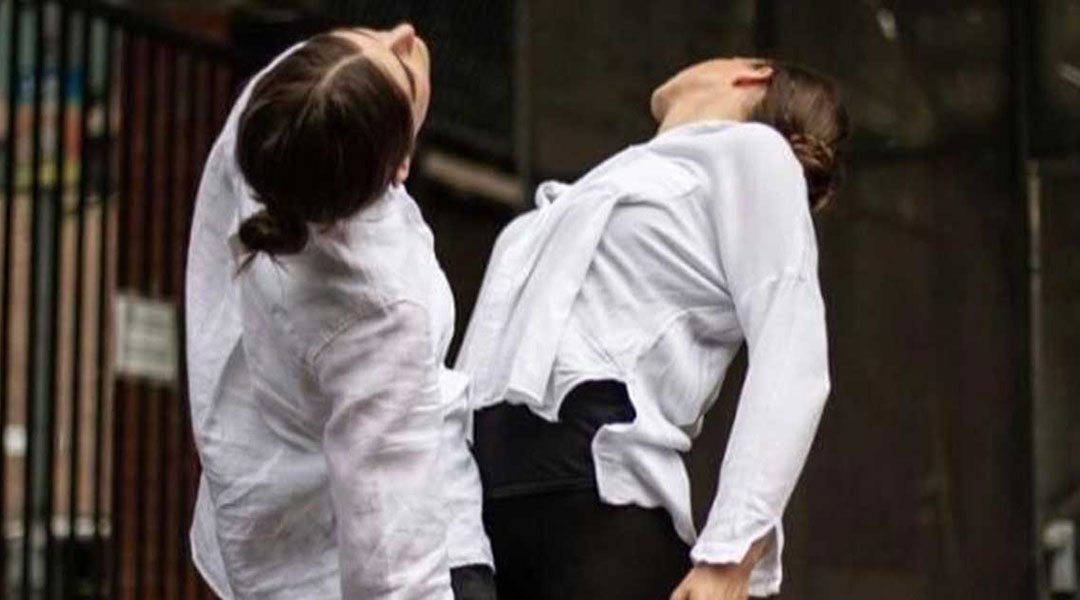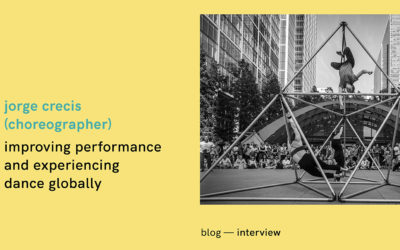What’s the value of dance writing?Interview with Katie Hagan
Inspired by the meaning of the DIY (Do It Yourself) ethos, we keep sharing the newest and boldest independent dance scene. Today, we introduce you to dance art journal – a magazine that gives voice to independent artists through a variety of content such as reviews and interviews.
Based in the UK, but with an international team of dance writers, its mission is to inform, share and celebrate the independent dance sector. Katie Hagan is the founder of the dance art journal and she tells us more about the value of dance writing to support the independent sector.
“To me, dance is still quite a niche and seen as something that maybe it’s difficult to understand and makes people think ‘Oh, this is not for me’. But at the end of the day, I think we all have a body – our bodies are very different but we all have one – so it’s something we can relate to and it’s not confined by language. It’s universal.”
Who are you?
My name is Katie Hagan and I’m a copywriter for a PR Agency that is not related to dance – but dance has always been in my life and has been following me around. Until the age of 18, I was training at a local dance school and by that time I didn’t know if I wanted to study dance so I ended up studying an English degree, because I also love books and global literature. While at university, I was part of the dance society – so dance was always there, even if I didn’t want to pursue a career as a professional dancer. After concluding my Master’s degree, I found out more about Siobhan Davies Dance and I applied for a programme facilitated by the choreographer Amy Bell, which brought dance back into my life. It was such an amazing experience. And now I’m writing about dance and I started the dance art journal.
Why did you decide to create an online magazine called dance art journal?
Dance writing was always something that I wanted to do and the idea of creating a magazine was conceived after Resolution 2019 (the annual festival for emergent choreographers at The Place London). Resolution was fantastic and it made me think that I could make something different from dance writing. Most of all, I wanted to create a community of dance writers and to support the independent dance scene – there’s so much independent dance work which is so off the radar because there’s not enough attention on it! As a collective of dance writers, we want to be able to inform, to share, to bring dance communities together and to celebrate dance!
Some of the contributors are also dancers / performers / choreographers. Do you feel that is something that enriches dance writing activity? Or are there any risks to becoming a niche content?
We have a real mix of dancers and non-dancers and I think this is really important in order to keep a wide perspective. I never wanted to have only dancers writing about dance. But at the same time, I also don’t want only a group of non-dancers collaborating. There needs to be a balance – and I think that we do have that balance. Both backgrounds and perspectives can obviously surprise you and everyone is going to bring something different as we all think as individuals very differently… For example, when I do a review, I use to focus not only on the movement but also on the question ‘what moves you?’ because I feel that dance can be the vehicle for something, but it can also be a disruptor: the meanings are not straight, the process is not linear. And if you only have a team of dancers as reviewers, maybe it can make the content more technical and specific which makes it harder for other people to read it and come in. That’s why our team is balanced: there are a few of us who didn’t train dance and just love dance and love watching it. When I review, I do focus on movement – I know it’s important – but I’m always going to focus on ‘why they’re moving?’, ‘what is moving them?’, ‘what is in there? what makes you want to do that’? and I think that is way more compelling. There’s something really poetic in describing movement, but then inevitably it kind of becomes very descriptive but I always wanted to ask the questions that make the reader understand better the performance.


In your opinion, how does dance become a more accessible language for everyone?
It’s though… I used to think that accessibility was the most important point once we wanted to make dance more accessible to broader audiences. But at the same time, we don’t want it to become mainstream or make it lose its taste, uniqueness. I think that it’s more about helping people realize that the fringe work, the independent work has got a place in the dance sector. I also hope that doing what I’m doing makes the dance more accessible. Not everybody can get to the theatre, but you can go to a website for free and read, discover more about dance. And this is another reason why we do it. The way digitalization is going nowadays, including for the dance sector, requires more online presence and initiatives that connect dance artists and people.




0 Comments